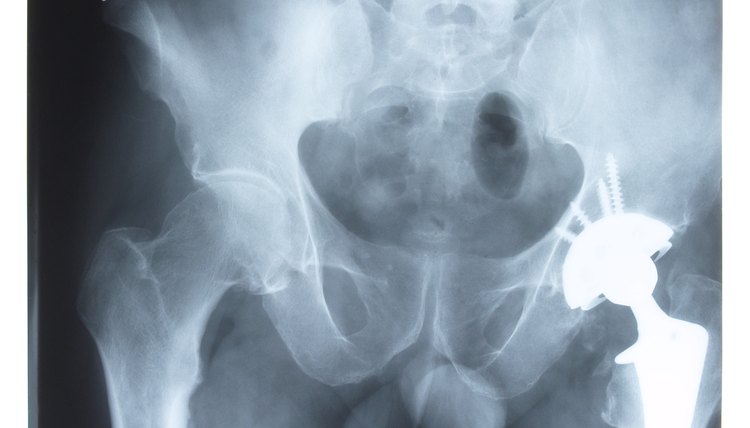Exercises for the Obturator Internus

The obturator internus is one of six muscles that externally and internally rotates your hip joints. It also works with other hip muscles near the surface to stabilize your pelvis to prevent injury when you move. The obturator internus stretches from the lower, posterior part of the groin to several fibrous tissues that connects to the ball-and-socket joint where the femur attaches. Because this muscle is attached to other hip muscles by connective tissues and nerves, you cannot isolate this muscle to strengthen or to stretch. You must incorporate other muscle groups when you exercise it.
Wall Internal and External Hip Rotation
This exercise works on internal and external rotation of the hip joints without compensating with your lower back. You may find that one aspect of the rotation is more challenging than the other part. Lie on the ground on your back with your legs propped up against a wall about shoulder-width apart. Put your arms on the ground to your sides, scoot forward until your buttocks are touching the wall. Turn your feet toward each other as much as you can without moving your pelvis. Hold this position for three seconds, then rotate your feet out as much as you can for three seconds. Repeat this pattern for two sets of 20 repetitions total.
Active Supine Frog Stretch
This exercise stretches your groin muscles while moving your hip rotators repetitively to increase mobility. Lie on your back with your arms out to your sides. Put the soles of your feet together, then bring your heels as close to your groin as possible. Hold this stretch for three deep breaths, then bring your knees up and together so you're feet are flat on the ground. Push your knees against each other for three deep breaths, then lower your knees down again. Repeat this exercise for three sets of 10 reps total.
Supine Hip Rotation Stretch
This exercise stretches your hip rotators, including your obturator internus, without placing stress on your lower back. Start in the same position as the previous exercise with your feet on the ground about hip-width apart. Cross your right ankle over your left thigh near your knee, and rotate your pelvis to your left. Bring your left outer knee and your right foot to the ground without lifting your right shoulder off the ground. Hold the stretch for five to six deep breaths and return to the starting position. Perform two sets of stretches on each side.
Body-Weight Strength Exercises
All bodyweight exercises that emphasize your lower body work on the stability of your hip rotators. This helps you maintain your balance and joint alignment to prevent falls, injuries and movement compensation that causes joint inflammation and other joint disorders. Basic exercises include stair running, squats, lunges, step-ups and jumps. The National Academy of Sports Medicine recommends that you perform stretches before and after your workout to minimize your risk of injury and to improve hip mobility.
References
- NASM Essentials of Personal Fitness Training; Michael Clark
- Pain-Free Program; Anthony Carey
Writer Bio
Nick Ng has been writing fitness articles since 2003, focusing on injury prevention and exercise strategies. He has covered health for "MiaBella" magazine. Ng received his Bachelor of Arts in communications from San Diego State University in 2001 and has been a certified fitness coach with the National Academy of Sports Medicine since 2002.
